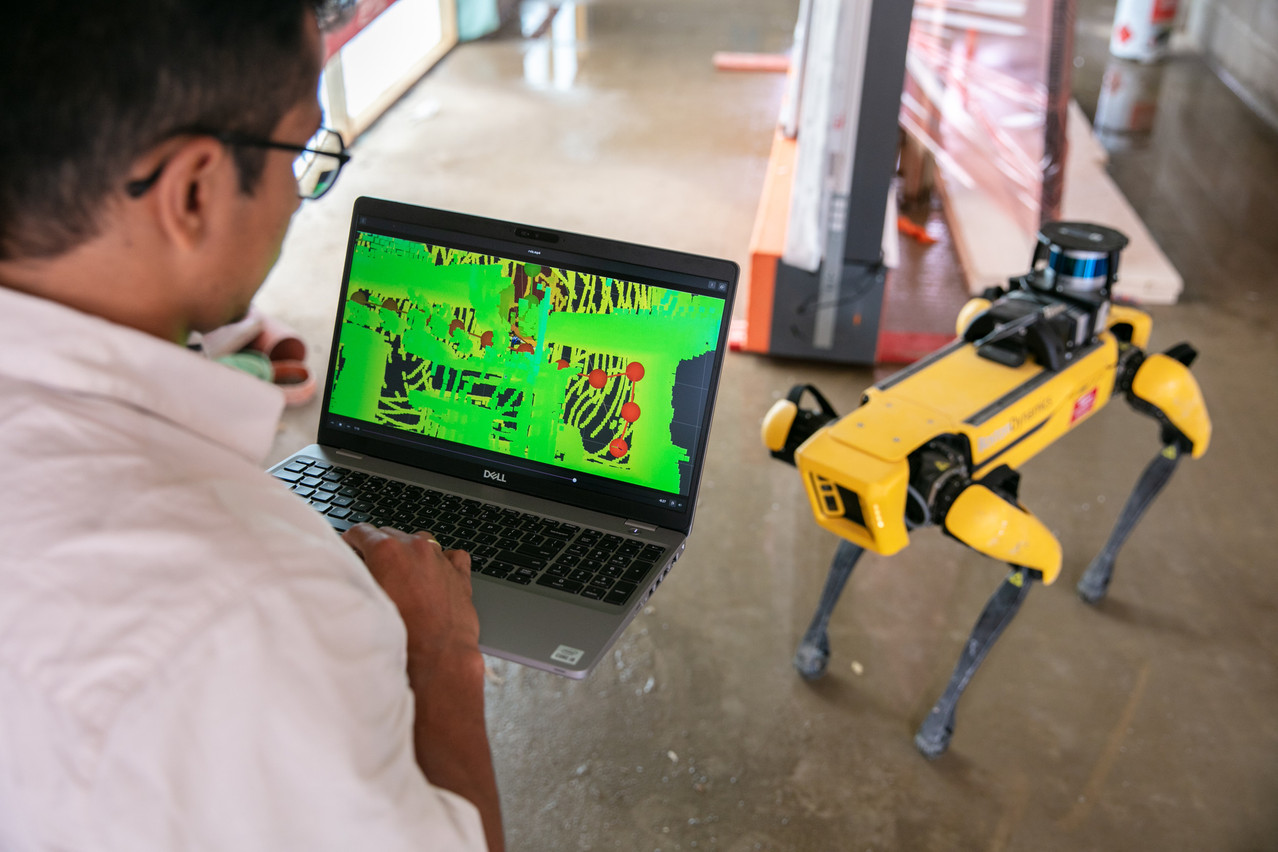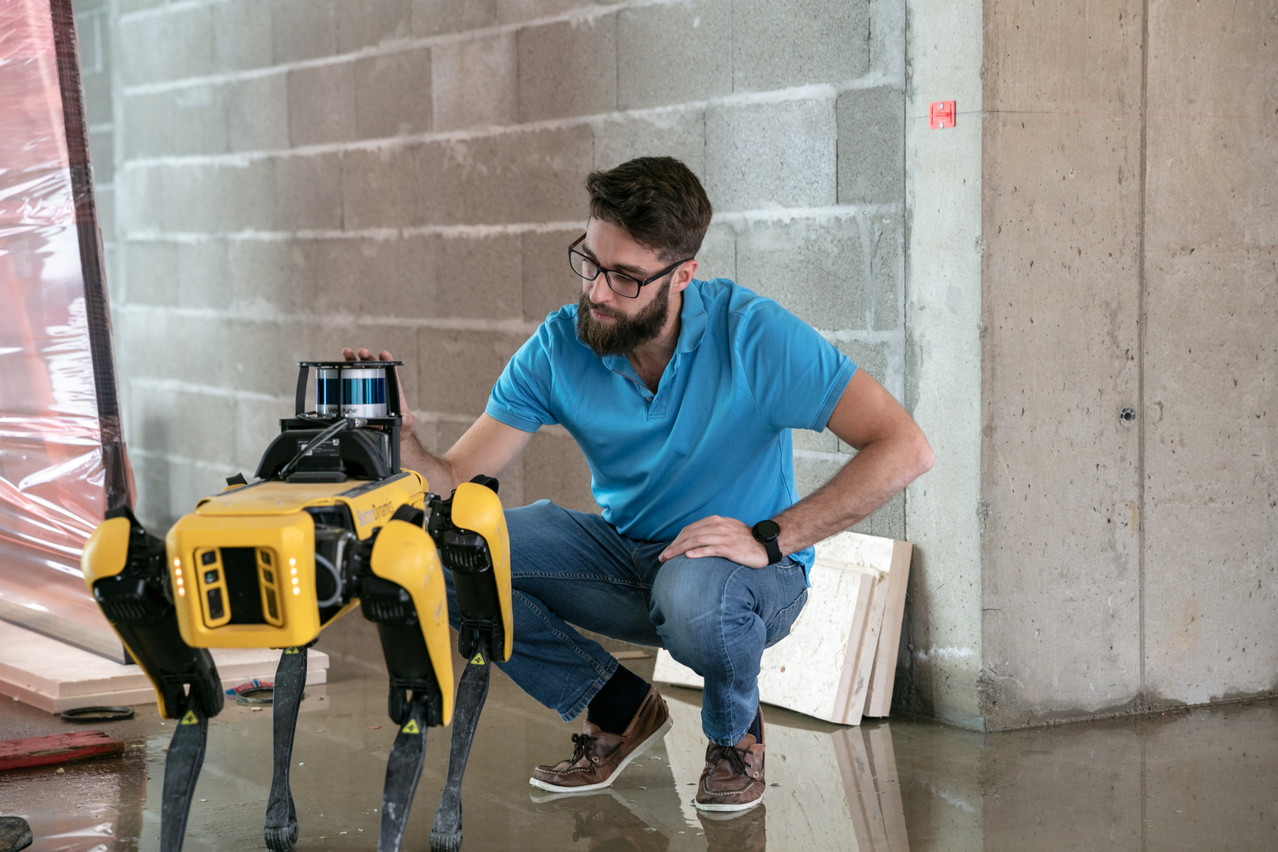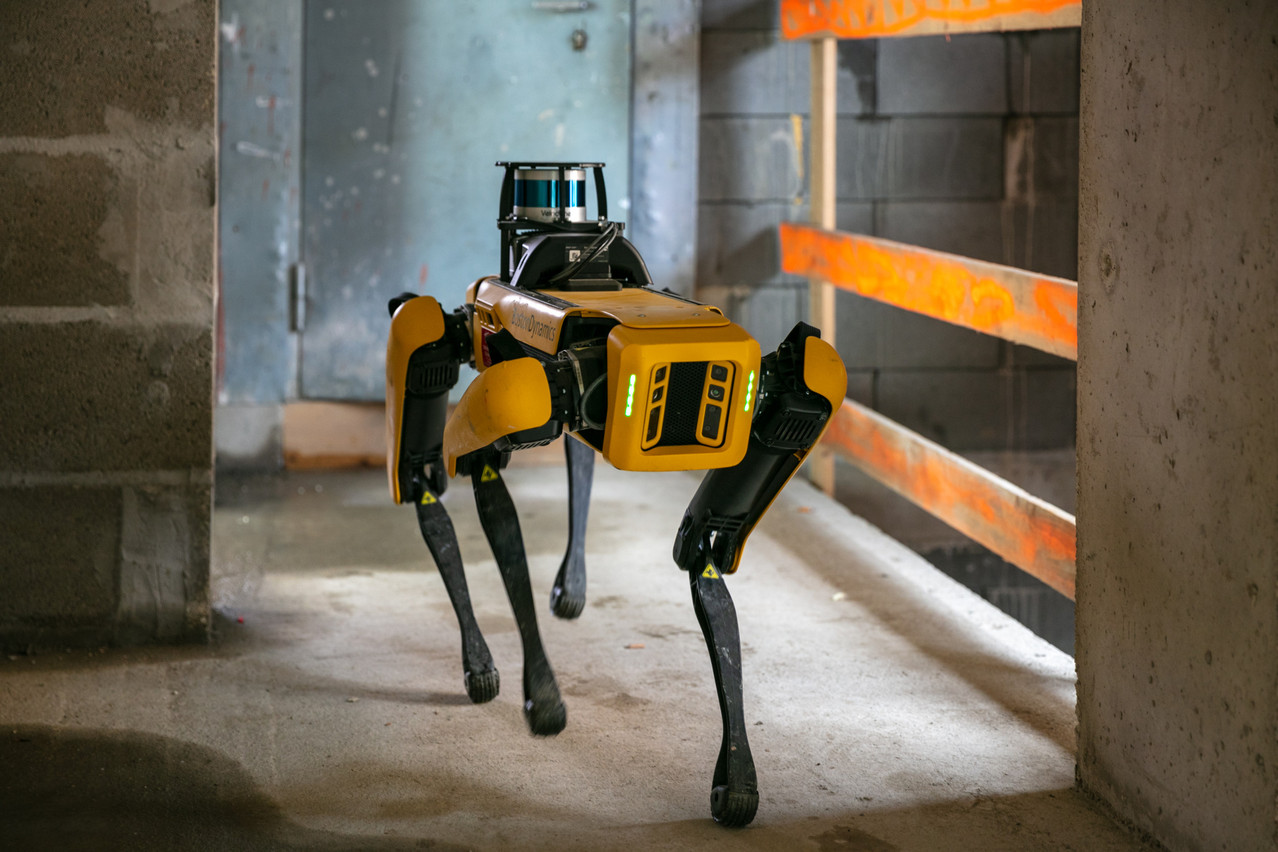“I don’t have dogs but I love dogs,” post-doc research scientist José-Luis Sanchez-Lopez confides as we wait outside a building site in Oetrange with two other researchers. Having grown up with dogs myself, I love making small talk about them. Usually these conversations would happen in parks, or with neighbours, not on building sites in the south-east of Luxembourg. But, this is not a social visit. We’ve left the comfort of our offices to take a walk with Spot, an agile mobile robot originally designed by Boston Dynamics to carry military backpacks in combat.
32-kilo robot dog
Spot, who Sanchez-Lopez pointedly tells me is “non-binary”, has many talents and is currently being programmed to autonomously conduct 3D inspections of Stugalux buildings sites. Normally, the task is done manually by engineers, however “because they have tools that are complicated to use, they don’t do it often. If there’s a deviation, they realise too late,” explains Sanchez-Lopez.
Our small group falls silent as Stugalux engineer Daniel Antunes arrives and removes the 32-kilo Spot from the boot of his car. We hear the pneumatic movement of four legs on the tarmac before the leggy, black and yellow robot comes into view. At 70 centimetres tall, with no tail, ears or head, beyond a series of lenses on a flat front, it is hard to know if Spot is happy to see us. At least it won’t bite, I think, and refrain from patting it on what I imagine would be its the head.
Using a remote control, Antunes guides spot onto the chaotic construction site . “It will probably fall because that step is not the recommended height,” says Hriday Bavle, a post-doc research associate and part of the research team. Spot aces the manoeuvre. Bavle follows and loses his footing. “The dog was better than me,” he says, laughing.
We go upstairs in the shell of the house. It is dark and there is a puddle from rainwater that has seeped in. Spot is able to work in all conditions, Bavle explains, but light reflected on water can mess up its sensors. Another kryptonite for our freaky four-legged friend is a plastic sheet discarded on the floor. Spot loses its footing but remains upright. “You won’t break anything,” explains Antunes, encouraging me to give Spot a kick. It feels somehow wrong, but I push gently with one foot and Spot steps back patiently.

Hriday Bavle, pictured, is a post-doc research associate working on the three-year project on behalf of the SnT Romain Gamba / Maison Moderne
Disinfecting hospitals
“It’s easier to balance with four legs,” says Antunes. This also makes Spot more versatile than say a robot on wheels for which you’d have to add stairs to its list of kryptonite. This versatility means that Spot can be used in a number of other settings. Antunes explains that colleagues are working with Luxembourg firm Gradel so that the robot dog can spray disinfectant in hospitals.
“Each leg has 3° of freedom. It has a stairs mode, and a crawl mode, for when you are in a very hostile environment,” he continues, and I wonder how bad things are getting in hospitals. I begin to warm to Spot when Antunes shows me his dance moves. “It’s not the purpose of the robot [to dance]” he says. If nothing else, it means Spot can also add dance instructor to its use cases.
The team plug in laptops and start testing their code. If the project is successful, Spot will be able to conduct site inspections overnight when the workers are finished for the day. Depending on the size of the site, an inspection would then take between five minutes, for example on the site we are on, and two hours. Retailing at around €75,000 per unit, it seems like a costly solution but by the end of the three-year applied project, the technology will already have gotten cheaper.

Post-doc research scientist José-Luis Sanchez-Lopez, pictured, says Spot sometimes feels like a real dog Romain Gamba / Maison Moderne
Getting outside
The last time I reported on a robotics project at the University of Luxembourg’s SnT secrtion, it was the robotics world cup, very much an indoor project.
“It must be nice to get out of the office?” I suggest. Sanchez-Lopez replies that much of the applied work has to be outside the office, to solve real-world problems.
As an example he explains that a team he is overseeing is about to complete a PhD thesis on roof-top drone use for security monitoring at the LuxConnect data centre. Another team has just begun working with grape growers in the Moselle region to use drones to spray and monitor the vines. “We talk to people who have a problem they need to solve. That’s why you need to leave your comfort zone. It’s much harder to take them outside,” he says.
